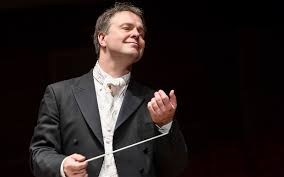Barbican Hall, 13 April 2016
Sakari Oramo has proved himself to be our finest living Elgar conductor. I say this without hesitation for while we have many fine Elgar conductors today, none brings the sense of vitality and complexity to the scores that he does.
The performance of the First Symphony at the Barbican was a good case in point. The opening was heroic, gently flowing without any hard edges, yet had a luminous quality which lifted the spirits from the opening bars. Sakari Oramo creates the most subtle fluctuations of dynamics and tempi to highlight inner voices and tensions which might otherwise go unnoticed. Solo playing was exceptional with the brass blazing into life without any sense of raw edges.
The clarity of the string figuration at the start of the second movement impressed, and Oramo drew our attention to Elgar’s closeness to Mahler rather than Brahms in these inner movements. There is a ferocity to the brass which Brahms would never have allowed but which looks forward to the turmoil of Elgar’s second symphony.
The clipped staccato opening to the final movement hinted at a world held in suspense before it is finally released, revisiting all of the former ideas but seeing them now through the eyes of wisdom.
A magnificent performance, with some exceptionally fine solo playing, not least from the two harps.
The evening had opened with Bax’s The Garden of Fand. Though not as well-known as Tintagel this is a fine romantic work which moves easily between the glistening sea and the earthbound dances. If the programmatic narrative leaves us a little bemused these days that does not affect the pleasure the work itself gives.
Brett Dean was the soloist in his own Viola Concerto. The two main movements have a brief, melancholic preamble before they launch into a dense score which is full of atmospheric detail. This is often effective but the sense of structure is difficult to follow and there is little to grasp melodically. Rhythms are frequently strong and powerful, with a full percussion section used throughout. The second movement opens quietly but soon builds to the ferocity of the first, though there is a fine extended solo passage for cor anglais at the end. The concerto was very well received.

